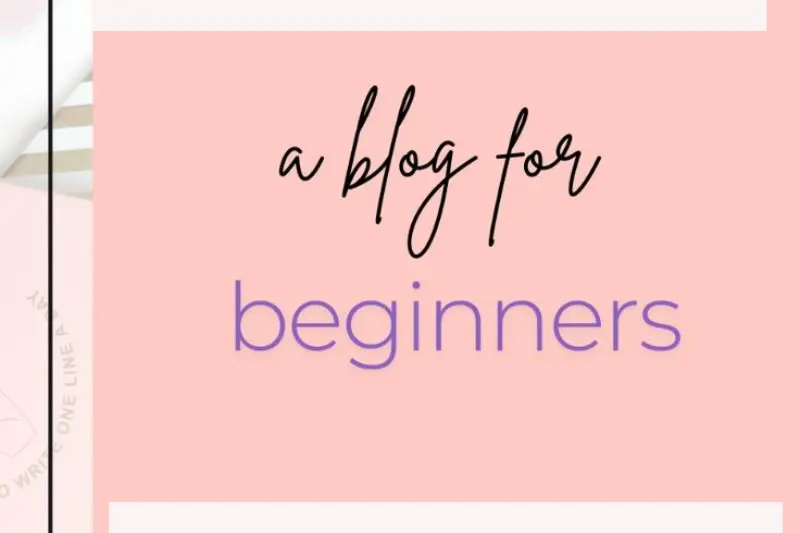Blogging has become one of the most powerful ways to share your ideas, connect with a global audience, and even earn money online. Whether you want to share personal experiences, provide valuable tips, or promote a business, starting a blog can help you achieve your goals.
For beginners, the thought of starting a blog may seem overwhelming, especially without technical experience. The good news is that with the right guidance, anyone can create a blog from scratch. This step by step guide to start a blog will walk you through the entire process—from choosing a niche and picking a platform to creating content and promoting your blog—making it simple and actionable.
Step 1: Choose Your Blog Topic and Niche
The first step in starting a successful blog is choosing a topic and niche that aligns with your passion and interests. Step by step guide to start a blog about something you genuinely enjoy will make it easier to create content consistently and stay motivated over time.

Identifying Your Passion and Target Audience
Think about your skills, hobbies, or expertise. Ask yourself what topics you could write about for months without losing interest. Once you have ideas, consider who would benefit from your content. Understanding your target audience helps you create relevant and engaging blog posts.
Tips for Choosing a Niche with Growth Potential
- Research popular topics in your field using tools like Google Trends or Ubersuggest.
- Look for niches with a balance of interest and competition—too broad can be overwhelming, too narrow may limit traffic.
- Consider long-term potential: choose a niche that allows you to create a variety of content over time.
Selecting the right niche sets the foundation for your blog’s success and helps you attract a dedicated audience from the start.
Step 2: Pick a Blogging Platform
Once you’ve chosen your blog topic and niche, the next step is selecting a blogging platform. Your platform determines how easy it will be to create, manage, and grow your blog.
Overview of Popular Platforms
- WordPress.org – Highly flexible and customizable, ideal for beginners and advanced users. Offers thousands of themes and plugins.
- Blogger – Free and simple, but limited customization and features compared to other platforms.
- Wix – Drag-and-drop website builder, beginner-friendly with visually appealing templates.
- Squarespace – Stylish templates and all-in-one platform, easy to use but slightly more expensive.
Beginner-Friendly Recommendations
For most beginners, WordPress.org is the best choice due to its flexibility, wide support community, and scalability as your blog grows. Platforms like Wix and Squarespace are good for those who want a simple setup with minimal technical work.
Choosing the right platform ensures your Step by step guide to start a blog journey starts smoothly and gives you room to grow without major technical challenges.
Step 3: Choose a Domain Name and Hosting
After selecting your blog platform, the next step is picking a domain name and hosting provider. These are essential for your blog’s identity and online presence.
How to Pick a Memorable Domain
- Keep it short, simple, and easy to spell so readers can remember it easily.
- Include keywords related to your niche to improve SEO.
- Avoid numbers, hyphens, or complex words that may confuse visitors.
- Check availability using domain registration services like Namecheap, GoDaddy, or Bluehost.
Best Hosting Options for Beginners
Reliable hosting ensures your Step by step guide to start a blog loads quickly and stays online. Beginner-friendly options include:
- Bluehost – Affordable, easy setup for WordPress, free domain for the first year.
- SiteGround – Fast, secure, and excellent customer support.
- Hostinger – Budget-friendly with beginner-friendly features.
Choosing the right domain name and hosting gives your blog a professional appearance and a solid foundation to grow your audience.
Step 4: Set Up Your Blog
Once you have your domain and hosting ready, it’s time to set up your blog. This step ensures your Step by step guide to start a blog looks professional and functions smoothly.
Installing the Platform
If you chose WordPress.org, most hosting providers offer one-click installation. Simply log in to your hosting account, find the WordPress installer, and follow the prompts. For other platforms like Wix or Squarespace, sign up and follow their guided setup process.
Choosing and Customizing a Theme
Pick a theme that fits your blog’s style and niche. Free and paid themes are available:
- Free themes – Good for beginners, often with basic customization options.
- Premium themes – Offer more design flexibility, responsiveness, and features.
Customize your theme by adjusting colors, fonts, header images, and menus to match your brand identity.
Installing Essential Plugins or Tools
Plugins enhance your blog’s functionality. Some essential plugins for beginners include:
- SEO plugins (e.g., Yoast SEO, Rank Math) – Improve search engine visibility.
- Security plugins (e.g., Wordfence) – Protect your blog from threats.
- Performance plugins (e.g., caching tools) – Speed up your website.
- Backup plugins – Ensure your data is safe in case of issues.
Setting up your blog correctly at this stage creates a solid foundation for creating content and attracting readers.
Step 5: Create High-Quality Content
Creating valuable and engaging content is the heart of blogging. Step by step guide to start a blog Your content not only attracts readers but also helps your blog rank higher in search engines.

How to Write Engaging Blog Posts
- Start with a strong headline that grabs attention.
- Break content into short paragraphs and headings for easy readability.
- Use clear and conversational language to connect with your audience.
- Include actionable tips, examples, or personal stories to make posts informative and relatable.
Using SEO Basics to Improve Visibility
- Research and include keywords related to your topic.
- Optimize meta titles and descriptions for search engines.
- Add internal links to other posts and external links to credible sources.
- Use descriptive alt text for images to improve SEO.
Adding Images, Videos, and Other Media
Visuals make your content more engaging and easier to understand.
- Include images, infographics, and charts to illustrate points.
- Embed videos for tutorials or demonstrations.
- Use audio clips or podcasts if relevant to your niche.
High-quality content keeps readers coming back, encourages sharing, and improves your blog’s search engine rankings.
Step 6: Promote Your Blog
Creating great content is just the beginning. Promoting your blog ensures that your posts reach the right audience and gain traction online.
Using Social Media, Email Marketing, and SEO
- Social Media – Share your blog posts on platforms like Facebook, Instagram, LinkedIn, and Twitter to drive traffic. Tailor your content to fit each platform’s audience.
- Email Marketing – Build an email list to notify subscribers about new posts, updates, or offers. Tools like Mailchimp or ConvertKit can help beginners manage email campaigns.
- SEO (Search Engine Optimization) – Optimize your blog for search engines by using keywords, meta tags, internal links, and high-quality content to increase visibility in search results.
Engaging with Readers and Building a Community
- Respond to comments and messages to foster relationships with your audience.
- Encourage readers to share posts and participate in discussions.
- Join blogging communities or forums in your niche to expand your reach.
Consistent promotion not only drives traffic but also builds a loyal audience and helps establish your blog as a trusted source in your niche.
Step 7: Monetize Your Blog (Optional)
Once your blog has consistent traffic and engaged readers, you can start earning money from it. Monetization is optional but can turn your blogging hobby into a profitable venture.
Ways to Earn from Blogging
- Ads – Display ads on your blog through platforms like Google AdSense. You earn revenue when visitors view or click the ads.
- Affiliate Marketing – Promote products or services and earn a commission for each sale made through your referral links.
- Products/Services – Sell your own digital products (e-books, courses) or services (consulting, coaching) directly to your audience.
Beginner-Friendly Monetization Strategies
- Start with affiliate marketing for products related to your niche, as it requires minimal setup.
- Use Google AdSense once your blog has regular traffic to generate passive income.
- Consider creating simple digital products like guides, templates, or checklists to sell to your audience.
Monetization should be approached gradually. Focus on building quality content and a loyal audience first, then explore ways to generate income without compromising user experience.
You may also like to read these posts:
Email Marketing Tools Comparison: Best Picks 2025
Best Free Online Software for Small Businesses 2025
Best Collaboration Tools for Remote Teams-Boost Productivity
Step by Step Guide to Create a Website for Beginners
Common Mistakes to Avoid While understanding Step by step guide to start a blog
Starting a blog is exciting, but beginners often make mistakes that can slow growth or reduce engagement. Here are common pitfalls to avoid:
Inconsistent Posting
Publishing irregularly can make it hard to build a loyal audience. Create a content schedule and stick to it to keep readers engaged and returning for more.
Ignoring SEO
Not optimizing your blog for search engines can limit your visibility. Use basic SEO strategies like keywords, meta descriptions, and internal linking to improve search rankings.
Poor Design
A cluttered or outdated blog design can turn visitors away. Choose a clean, responsive theme and organize content for easy navigation.
Not Engaging with Readers
Failing to respond to comments or emails can make your audience feel ignored. Engage with readers, encourage discussions, and build a sense of community around your blog.
Avoiding these mistakes will help you grow a professional, engaging, and successful blog from the start.
FAQs About Starting a Blog
Can I start a blog for free?
Yes, platforms like WordPress.com, Blogger, and Wix allow you to start a blog for free. However, free plans have limitations like restricted customization, subdomains, and ads. Paid plans offer more flexibility and a professional look.
How long before my blog gets traffic?
Traffic depends on factors like content quality, SEO, and promotion. Most new blogs start seeing consistent traffic within 3–6 months with regular posting and effective promotion.
Do I need technical skills to start?
No, beginners can start without coding skills. Platforms like WordPress, Wix, and Squarespace offer easy-to-use interfaces and Step by step guide to start a blog for setup and customization.
Which platform is best for beginners?
WordPress.org is widely recommended for beginners due to its flexibility, scalability, and community support. Wix and Squarespace are also beginner-friendly for those who want simpler setups.
How often should I post?
Consistency matters more than frequency. Start with 1–2 high-quality posts per week and adjust based on your audience’s response and your capacity to maintain quality content.
Conclusion
Starting a blog may seem challenging at first, but by following this step by step guide to start a blog, beginners can create a professional, engaging, and successful blog. From choosing a niche and picking the right platform to creating high-quality content, promoting your blog, and even monetizing it, each step builds a solid foundation for long-term growth.
Avoid common mistakes like inconsistent posting, ignoring SEO, or poor engagement with readers, and focus on providing value. With patience, dedication, and the right strategies, anyone can grow a blog, reach an audience, and potentially earn income online.
Your blogging journey begins today—take the first step, and start sharing your ideas with the world!





